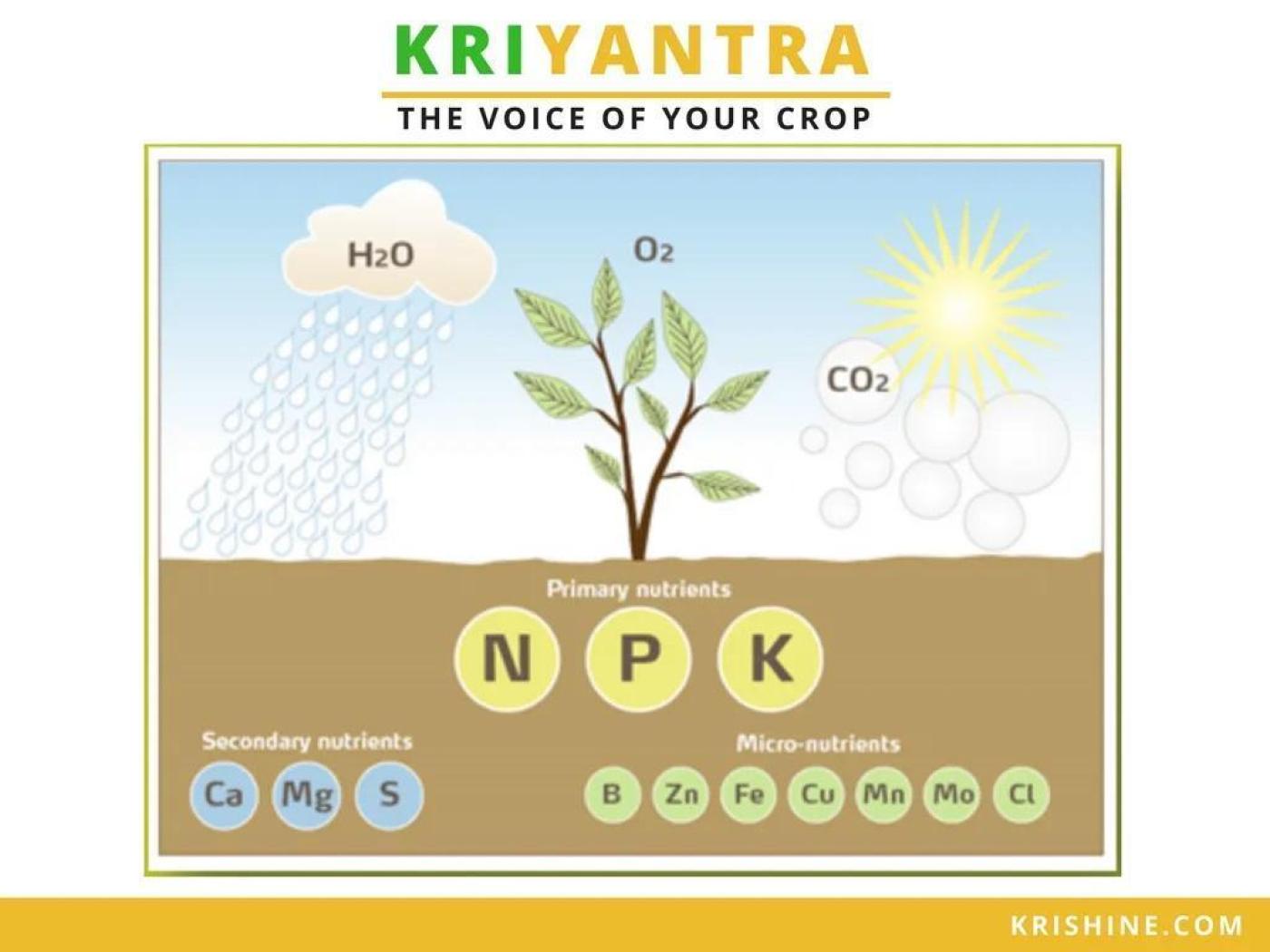It’s very crucial to recognize the needs of your crop. Many times due to lack of information our crops undergo from extremely trivial issues resulting in a low quality of produce. Understanding the specifications of your crop is a must for a good produce. In order to assist you better, Krishine has listed down the essential micronutrients and the problems which could come in absence of these in your crop. A total of 13 nutrients play a very key role for a plant to sprout and flourish.
And these can be divided into macronutrients, elements of which plants require large quantities, and micronutrients elements that are required by the plant in smaller amounts. A micronutrient, though required in small doses, is not less vital for plant growth.
The availability and fluidity of these 13 plant nutrients in the soil and in the plant itself are highly mutable, and this has connotations for responsibly handling both plant nutrition and irrigation.
Nutrients action in Soil
The flux of plant nutrients in soil determines their uptake and their sensitivity to leaching, volatilization, and runoff. For example: while nitrogen in the form of NO3- is highly mobile in soil, phosphorus (in the forms HPO42- and H2PO4-) is not. This means that nitrogen utilization can be dispersed and it can still make it plant roots but must be managed carefully, to inhibit leaching, whereas phosphorus must be applied closer to the seeds in order to be located by roots.
However, since phosphorus tends to remain in the upper layer of the soil, it might be lost in runoff when high precipitations occur. It is worth mentioning that nitrogen in the form of NH4+ is immobile in soil, so not only the nutrient but also the chemical form in which it is applied can be significant.
Nutrients flow in Plant
The mobility of nutrients in the plants themselves determines how to read signs of nutrient deficiency in leaves. A deficiency of immobile nutrients can be seen in yellowing new leaves, whereas a deficiency in mobile nutrients can be seen in yellowing old leaves.
This is because movable nutrients travel from old leaves to suffuse new growth, whereas immobile nutrients cannot be transferred between new and old growth, so deficiency symptoms will show up in the new growth.
Nutrients that are mobile in plants include the basic N-P-K primary macronutrients; nutrients that are motionless in plants include the secondary macronutrient, like calcium, magnesium and most of the micronutrients.
Managing nutrients responsibly involves not only the understanding of the quantities needed, but also how they move in soil and within the plant, and knowledge to identify the deficiency or toxicity symptoms.



